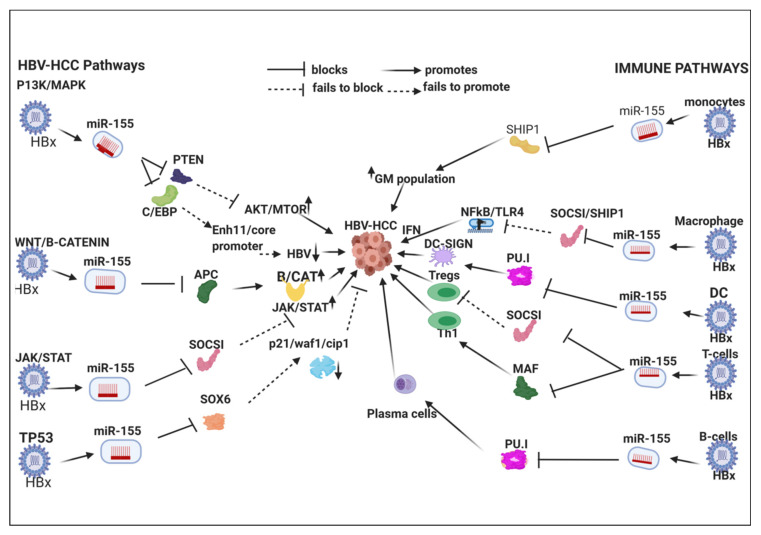Figure 1.
HBx induced MiR-155 in HBV-HCC immune pathways: This HBx-upregulated onco-miRNA promotes MTOR signaling and EMT in the P13K/MAPK pathway; it promotes β-Catenin expression to promote oncogenic proteins like C-MYC in the WNT/β-Catenin pathway; it subdues SOCSI suppression of JAK/STAT signaling to promote oncogenic proteins like C-MYC and CCND1 in the JAK/STAT pathway and it reduces expression of tumor suppressors like p21/waf1/cip 1 to promote cell proliferation in the TP53 pathways. This upregulated miRNA, however, reduces HBV replication by repressing C/EBP promotion of ENH11/core promoter. In the immune pathway, this miRNA influences granulocyte/monocyte populations via repressing SHIP1; it represses SHIP1/SOCS1 to promote NF-κB/TLR induction of macrophages; in DCs this miRNA represses PU.1 induction of DC-SIGN to reduce pathogen cell surface uptake; in T-cell synthesis this miRNA can repress SOCS1 to promote Treg production, it can promote Th1:Th2 ratio by repressing C-MAF; in B-cells this miRNA represses PU.1 to promote GC differentiation into memory or plasma cells.

